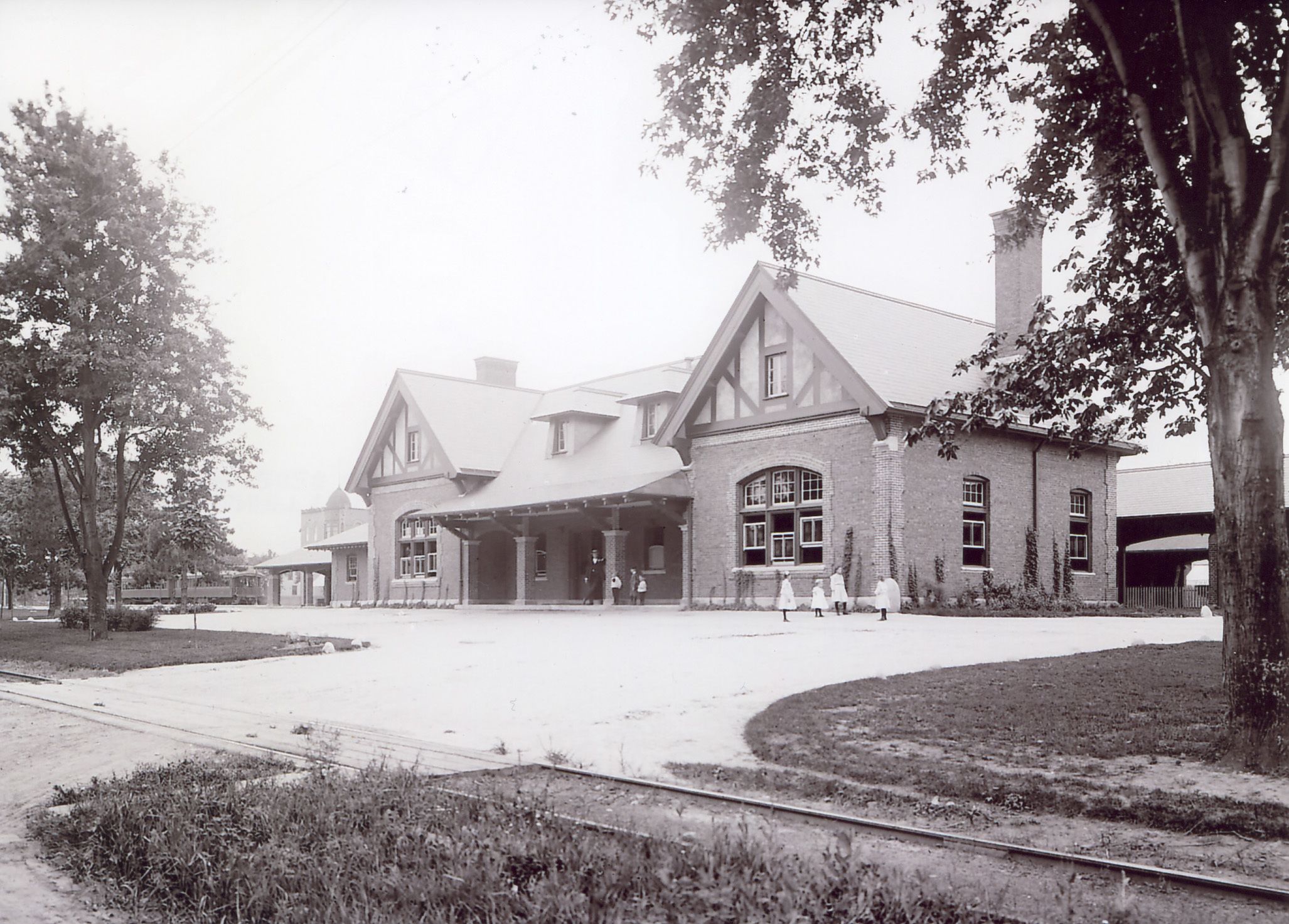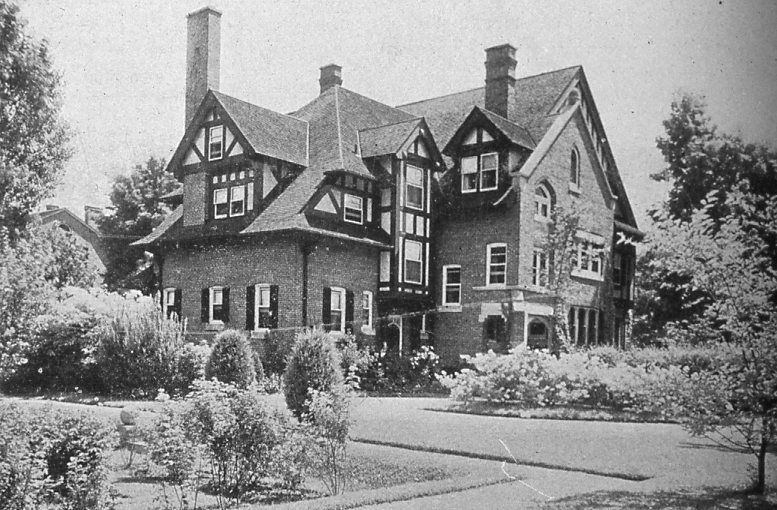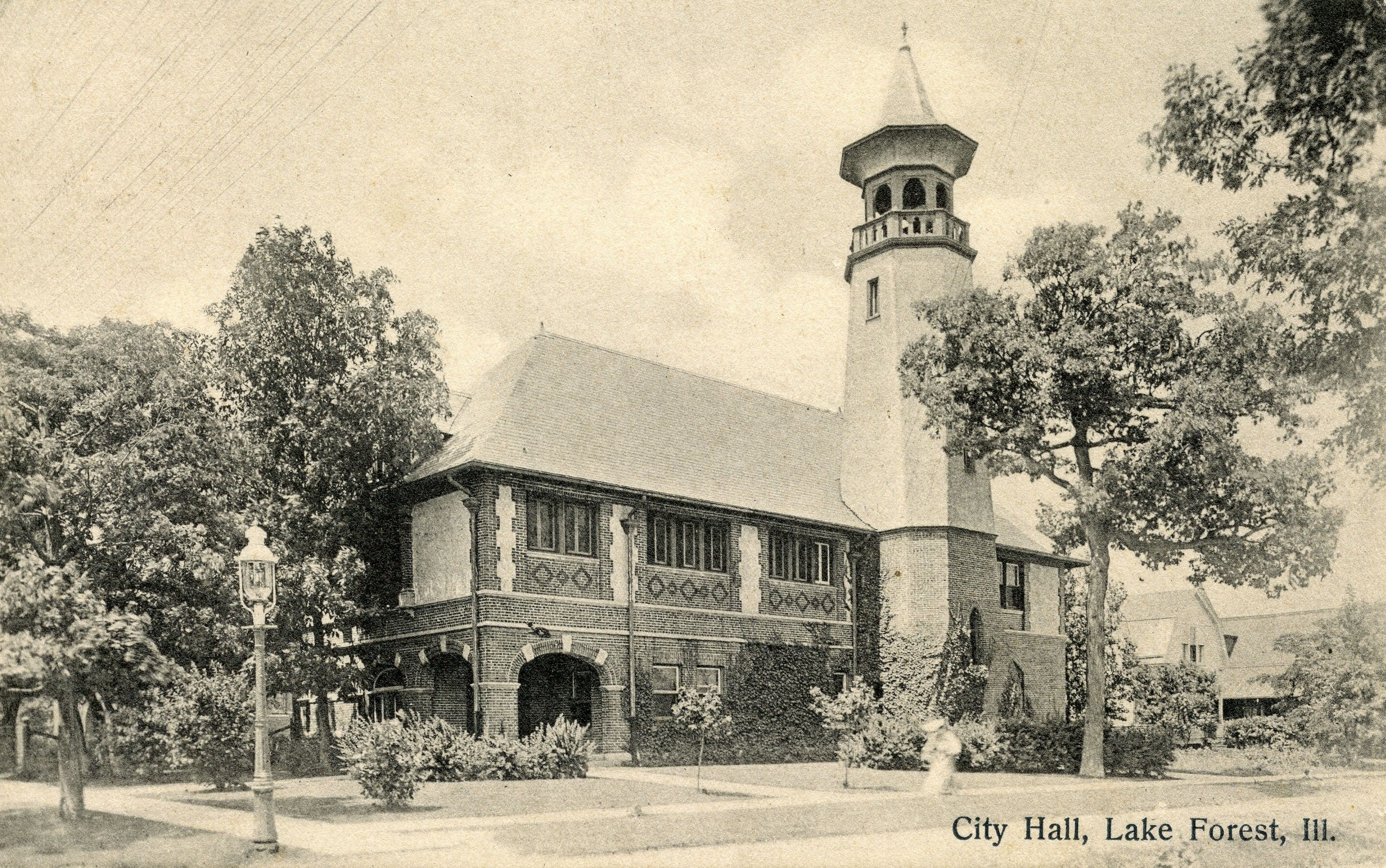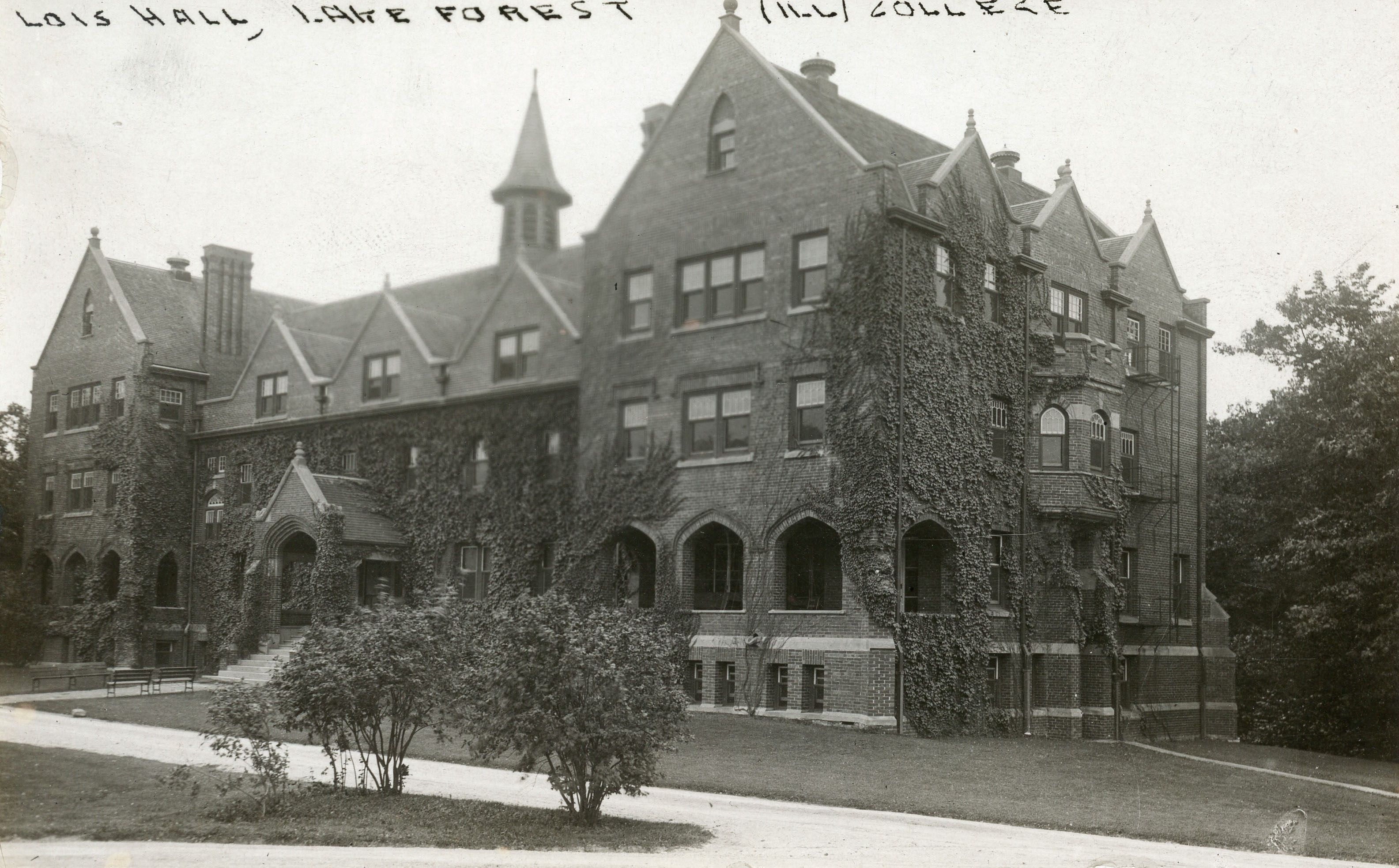
East Lake Forest train station, Frost and Granger, 1899 – pictured c. 1905.

Woodleigh, home of Alfred and Belle Hughitt Granger, designed by Granger in 1897. 907 North Sheridan Road. The style is representative of the English influence on much of his work.

East Lake Forest train station, Frost and Granger, 1899 – pictured c. 1905.

City Hall, Frost and Granger, 1898. Pictured c. 1907.

Lois Durand Hall, Frost and Granger, 1898-99.
Educated at Kenyon College, Massachusetts Institute of Technology and eventually the Ecole des Beaux-Arts in Paris, Alfred Granger came to Chicago to assist architect Charles Coolidge on the design of the Art Institute of Chicago for the 1893 World’s Columbian Exposition.
Four years later he went into partnership with his brother-in-law, Charles Sumner Frost. Frost and Granger married sisters who were the daughters of Marvin Hughitt, President of the Chicago and North Western Railroad. All three men lived in Lake Forest. Frost and Granger designed distinctive railway stations along the North Shore, notably the Lake Bluff and East Lake Forest depots, as well as more than two hundred other buildings for the Chicago and North Western, the Milwaukee Road, Great Northern, and Rock Island railroads.
Lake Forest City Hall is the work of Alfred Granger, as well as Church of the Holy Spirit and several Lake Forest College buildings. He’s credited for influencing the Lake Forest “look” – half-timbered English-style prominently used in Howard Van Doren Shaw’s Market Square. “Woodleigh,” Granger’s own home, still stands at 907 North Sheridan Road.
Frost and Granger designed a number of buildings for Lake Forest College’s campus building boom in the 1890s and early 1900s, including Alice Home Hospital (1898), Reid Hall (1899-1900), Lily Reid Holt Chapel (1899-1900), Blackstone Hall and Harlan Hall (1907-08), and Carnegie Hall (1908).
Granger became an esteemed author and in the 1920s chaired the competition for the design of the Tribune Tower on Michigan Avenue.